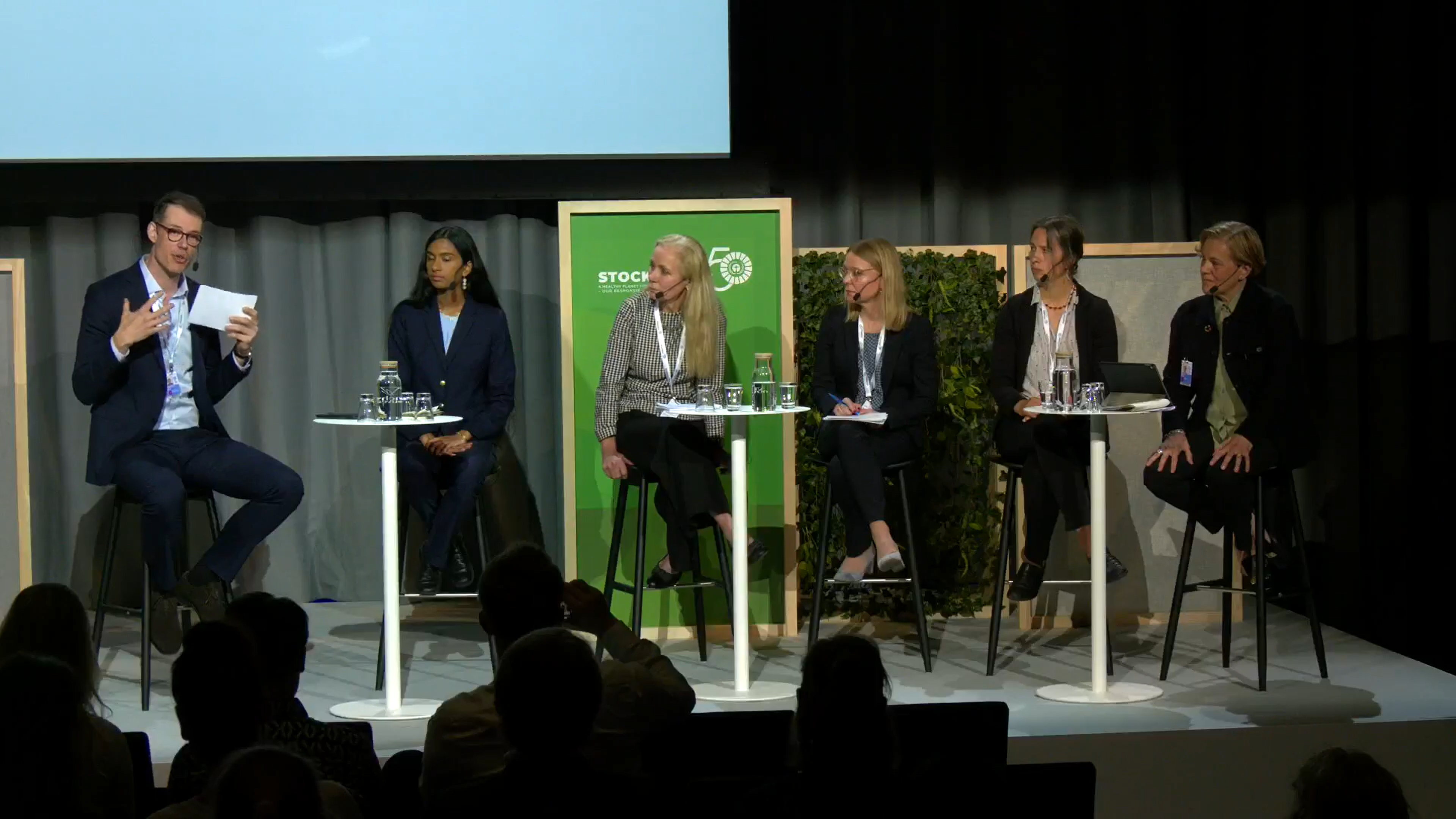“Water has a critical role for our common future, but we need to dramatically shift the way we think about, value, and act on water. We need to take more action, in an aligned and holistic way, joining forces and coordinating efforts” observed Joakim Harlin, Head of Freshwater Ecosystems Unit, UNEP, and Head of UNEP-DHI Centre on Water and Environment, as he opened the side event ‘Water Alignment: To enable innovation and finance for a climate-resilient future’ at the Stockholm+50 conference on June 2, 2022.
Darko Manakovski, GWP’s Head of Global Development, further set the scene around how ambitious transformative change is possible if we deliberately facilitate inclusive alliances to work differently and collaboratively on existing problems and their challenges, to go further faster.

The event addressed how to achieve a sustainable and inclusive future for all through water alignment, as a vehicle for coordination and impact, and was organised by GWP, the Governments of The Netherlands, Sweden, Tajikistan, and Germany, UNEP-DHI, and the Environmental Defense Fund.
Panelists emphasized the urgency to act. Water is central to societies, to sustainable development, and to climate resilience, but pressures on water and water-related risks are rising, with impacts on people, economies, and the environment. The most vulnerable, especially women, suffer the most. Yet, investment in water is largely insufficient and misaligned with other sectors.
Water alignment builds on the concept of Integrated Water Resources Management (IWRM), which remains a relevant concept with its systems approach and focus on bringing actors together, as noted by Cecilia Scharp, Assistant Director General at SIDA. Water alignment seeks to make change happen by getting all actors, stakeholders, governments, and those making investment decisions, to align towards the same goals in a strategic and actionable way. By designing a continuous inclusive conversation in a carefully curated manner, alignment can be enabled, with water as a central driver of collaboration for all development areas.
From his experience working on climate resilient food systems, Tom Grasso, Senior Vice President at the Environmental Defense Fund, emphasized the importance of looking at sectoral policies outside of water to ensure alignment – including, for example, taxes, subsidies, policies for transportation or land use, and financing mechanisms. “In order to have IWRM, we need to have other policies aligned. Discussions need to happen at all levels, including national and sub-national levels, as well."

Claudia Hiepe, Interim Head of Division for Environmental policy, biodiversity, forests, and marine conservation at the Federal Ministry for Economic Cooperation and Development of Germany, emphasized the importance of aligning biodiversity, water, and climate action. IWRM falls under the framework of nature-based solutions and is a ‘no regret’ intervention, but climate risk assessments and measures need to take the concept more readily into account to respond to climate change impacts. Integrated planning is, more than ever, key to ensuring sustainability.
Shreya Ramachandran, founder of 'The Grey Water Project' and a member of the Stockholm+50 Youth Task Force, shared how water alignment could support the scaling of grey water, a solution that’s available and can provide a steady and reliable source of water for multiple uses. Systems and policies need to be put in place to regulate, standardize, and incentivize its use. She also noted that to bring youth’s energy towards water, as is happening in the climate space, youth need to better understand how central water is to the global challenges we are facing.
An important focus for water alignment is financing, and the panelists explored how to ensure that cross-sectoral investments are optimizing synergies, and to increase financing by amplifying private investments.
“Development aid won't be enough to solve the problems we face, but we can work in innovative ways with our partners to solve those issues,” said Sharp. “Private investments need to be supported, in particular, through improved enabling environments, helping to de-risk investments, and collaboration with existing platforms that seek to improve the business climate and increase investments in countries.”
Karin Kronhöffer, Director of Strategy and Communications at Swedfund, the Swedish development finance institution, shared perspectives on why investments in water are lacking – including difficulties to price water and the need for water remain affordable. Looking at what works in other sectors, she said it would be important to support investments that can contribute to supporting access to water, to provide impact-oriented capital that can be invested long-term, to offer technical assistance, and to support innovation and new technologies. Alignment needs to be based on competencies, on resources efficiency, and on supporting action.
Finally, the panel highlighted that the time is ripe for a global remobilization for water, as the global community prepares for the 2023 U.N. Conference of Water, co-hosted by the Netherlands and Tajikistan. Kitty van der Heijden, Director General for International Affairs, Ministry of Foreign Affairs, the Netherlands, spoke to the importance of the 2023 Conference – the first U.N. conference on water since the 1970s. “We want three things out of the U.N. 2023 Water Conference,” she said, “it has to be inclusive, it needs to be action oriented, and it needs to be cross-sectoral.”
In a summary comment, Manakovski noted that water alignment is the vehicle that can drive systemic change. By establishing common ambition and joint action, water alignment can build confidence, it can convene people, and focus minds on a final destination. “I think people need to get excited by doing something that is improbable, an alignment process at scale and sustained to get everyone moving in the same direction.”
In his closing remarks, Sulton Rahimzoda, Co-chair of the Dushanbe Water Process, Government of Tajikistan, urged everyone to strive for transformation and innovation. He stated that the 2023 Water Conference should be a watershed moment for the world, and “we hope that the water alignment approach will provide good inputs into this process.”

